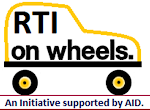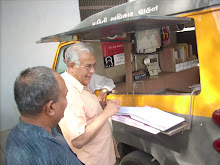The Leaflet: Shrikrishna Kachve: Pune: Monday: June 22, 2020.
PART I of this Right to Information (RTI) series had covered the history of the right, the importance of transparency laws in democracy, and a brief overview of RTI laws. We understood that the primary purpose of RTI is accountability and transparency by the government. Thus in this article will address who all are public authorities under the RTI Act and what are their obligations.
Who falls under the definition of public authority?
An RTI can be filed to any ‘public authority’ as defined in Section 2(h) of the Act. In simple terms, a public authority is any authority or body established by the Constitution or under a law made by the Parliament or State legislature. A public authority can also be a body constituted by a notification or order issued by the appropriate government. It includes any institution that is owned, controlled, or substantially financed by the government.
The definition of public authorities even covers information pertaining to private bodies. This is related to records submitted by a private body to the government. Thus if the government is legally in possession of information by private bodies, then the same can be accessed under RTI. These may include co-operative housing societies, non-governmental organizations (NGOs), and privately (non-aided) run schools/colleges.
For example, co-operative housing societies have to comply with the rules and regulations of the Co-operative Societies Act and accordingly submit documents to them. These documents like the registration, audit report, management committee details, and others can be accessed under RTI. Also since all private deemed universities are established by virtue of a notification issued under the University Grants Commission (UGC) Act, they are public authorities and thus fall under the ambit of RTI.
What are the obligations of public authorities?
Section 4(1) of the RTI Act defines the obligations of public authorities. Every public authority must maintain all its records. They must be duly catalogued and indexed in a manner that facilitates easy dispersal of information under the right to information under this Act. It is to ensure that all appropriate records are computerised and connected through a network all over the country on different systems for easy access.
The authority must publish information pertaining to its organisation, functions, and duties. It must explain publicly the powers and duties of its officers and employees. Further, it must enunciate the procedure followed in its decision-making process, and the norms and rules followed by it in discharging its functions. It must issue a statement of the categories of documents that are held by it or are under its control.
It must also publish a directory of its officers and the system of remuneration for their services. It must make public details of its Public Information Officer such as name, designation and contact details. Information relating to avenues and channels for obtaining information from the authority must be made public in an easy and accessible way. It must publish all relevant facts that were taken into consideration in policy formulation. It must also provide reasons for its administrative and quasi-judicial decision to persons affected by its decisions.
Details of its financial plans and budget allocations must be made public. Further, it must illustrate the execution of subsidy programmes and provide details of the expenditures incurred. If any concessions and permits have been granted by it then details of the recipients of these must be included. It must clearly state the details of arrangements made for consultation in relation to policymaking. Details of board or councils or committees must be furnished along with minutes of their meetings.
All information must be disseminated widely and in a manner that is easily accessible to the public. The authority must also on its own volition make all such information public instead of waiting for citizens to file RTIs seeking such information. The dissemination must be conducted in a cost-effective manner.
Effect of obligations on RTI.
It is obvious that Section 4 of the RTI Act advocates for suo motu disclosure of information. If stringently implemented, this will help in reducing RTI applications since the information will then be easily available to the public. This would also aid the Public Information Officers (PIOs) to a large extent. Such publication of information in the public domain should be done on a regular basis, or else its dearth may give rise to RTI applications. It is also suggested that once an RTI application is received and has been duly responded to by the PIO, then such a reply along with its application should be published as archives on the respective website in an easily traceable format. This would eliminate the redundancy of RTI applications on the same subject been filed multiple times by various other people.
There is no doubt that every government in aspiration of power promises transparency and accountability in governance to the public, but it eventually fails to do so once in power. Although political parties ought to be under the definition of ‘public authority’, they have successfully dodged their way from coming under the ambit of RTI. An order passed by Central Information Commission (CIC) on 3 June 2013, brought the Bharatiya Janata Party (BJP), Indian National Congress (INC), Bahujan Samaj Party (BSP), Nationalist Congress Party (NCP), Communist Party of India (CPI) and Communist Party of India – Marxist (CPI-M) under the ambit of RTI. However, the decision soon got embroiled in controversy and is currently under consideration in an appeal to be heard once a larger bench is reconstituted by CIC.
Financial accessibility of RTI
RTI is an important tool in a democracy. It’s very similar to the principle of Public Interest Litigation (PIL) and in analogy also affordable to the citizen. The RTI Act, 2005 is applicable to all the states and union territories of India except the state of Jammu & Kashmir which has its own Act similar to the Central Act. For the central government, the application fee is Rs.10 whereas there is no fee for first and second appeals. For the states, there are different RTI rules made by respective state governments and which generally ranges around Rs 10 to Rs 50 for an application and appeals. Notably, people falling under the Below Poverty Line (BPL) category are exempted from fee payment and can ask for information upon producing the BPL certificate issued to them by the appropriate government.
Conclusion
The citizen is the owner of information, and as the owner must also know about it. It is unfortunate that one has to seek RTI. As an inherent right, one should not need to ask or apply applied information. It should be available to the citizens without demanding or requesting it. The more the transparency in information, the better is accountability in governance. After all, what is ‘transparency’? Isn’t it being crystal clear on the policies made for the masses who are the tax-payers and beneficiaries? Not surprisingly, the incumbent Prime Minister’s Office (PMO) till date has rejected several RTI applications on queries relating to demonetization, PM foreign trips, black money, bad loans and defaulters list, inter alia.
As a first step, there would be a lesser need for a citizen to file complaints. Public authorities must implement Section 4 of RTI in its true spirit. Such information would be so exhaustive that it would include most of the essential information. This, as a result, would also help the Public Information Officers (PIOs) in lessening their task and eventually help reduce the burden of appeals and/or complaints. If the expansion of information is throttled, then it is very likely to cause the death of freedom of a free and fair society.
(Shrikrishna Kachave is an advocate practicing in trial court and tribunals of Pune)














































































